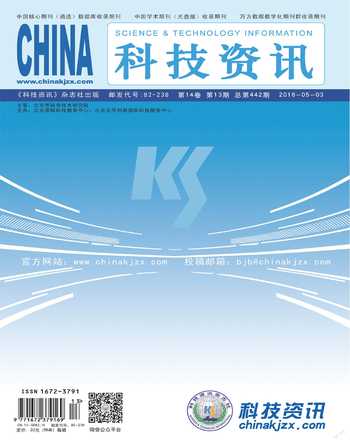深部巖體的卸載破壞及其本構模型
王明洋 范鵬賢 李杰
摘要:隨著國民經濟的快速發展,交通、采礦、水利、國防等工程逐步進入深地下空間,帶來了一些具有挑戰性的新的科學問題。本報告研究了深部巖體卸載變形過程和破壞的規律和理論模型,可為深部采礦工程、國防工程提供理論指導。主要內容有: 1. 分析了深部巖體的初始應力狀態,認為深部巖體由于其較高的初始地應力的長期作用,其賦存狀態已經從典型的固體轉變為類似流體的靜水壓力狀態,喪失了進一步抵抗剪切應變的能力。在卸載時,巖體將發生從流變體向典型脆性固體的轉化。分析了高初始應力巖體強卸荷的力學行為和破裂波傳播特點,推導了產生破裂波的臨界初始應力。分析結果表明,只有初始應力大于其臨界值時,才會產生破裂波。此臨界值與巖體的強度,泊松比和斷裂面的耗散能有關。若令斷裂面的耗散能趨近于零,則斷裂波的發生條件與巖體進入全向壓縮狀態的條件一致。 2. 提出了巖石軸壓劈裂和卸載拉伸破壞主要是由于巖石材料的非均勻性及其內部缺陷導致的應力集中引起的,建立了基于應力集中和應力起伏假設的粘性松弛模型,分析了軸向卸載和單軸壓縮劈裂時試樣內部的局部應力狀態,并指對加卸載速率、缺陷尺寸和初始應力對巖石卸載過程中缺陷處的應力集中的影響進行了分析。利用巖石類材料的不同試驗條件和加卸載速率下的加卸載破壞試驗和實地觀測數據對理論分析結果進行了驗證,理論分析結果與試驗現象和觀測統計數據基本吻合。 3. 根據深部巖體在卸荷條件下能量釋放、消耗和轉移的過程中,體積變形經歷彈性回彈和擴容,剪切變形可能經歷峰值前和峰值后階段的性狀,提出了深部巖體全過程變形破壞動態本構模型。該模型具有以下特點:(1)引入Juamann導數,能夠計算有限變形;(2)描述了卸荷過程中與時間相關的體變回彈、擴容至破裂的全過程關系;(3)描述了卸荷過程中,深部巖體強度被調動的演化過程,并用同軸的屈服面、破壞面與殘余破壞面三個圓錐面加以描述;(4)運用物理細觀力學理論,引入宏觀裂紋擴展滯后時間表征巖體不同構造水平在強化中的貢獻,給出了內摩擦強化階段流變方程;(5)運用裂紋運動散布理論,引入破裂時間表征宏觀裂紋擴展貫通過程,給出了破裂過程中的強度隨時間的演化方程,用塑性流動理論給出了軟化階段形變本構方程。該模型物理概念清晰、模型參數少,便于實際工程應用。
關鍵詞:深部巖體;初始狀態;卸載破壞;本構模型
Abstract:Deep rock mass is a kind of geological material which can be regarded as a rheologic material, and its inhomogeneity is covered up by its rheologic behavior. Under the disturbance of an unloading, the quasi liquid state of rock, which can be described by volume elastic model under compression, transfers from balancing quasi liquid state to non-equilibrium solid state. Analytical model for rocks under intensive unloading condition is established to study the failure behavior of highly stressed rocks. If the initial stress exceeds the critical stress, there will be a fracture wave, following the elastic unloading wave. Results show that the post-peak deformation, strength and energy dissipation are essential to the failure process of highly stressed rocks. In order to investigate the behavior of rock in depth,the unloading of hydrostatic stressed rock in axial direction is analyzed. Analysis shows that the tension stress is parallel to unloading direction. The main influential factors of tension stress are physical parameters of nonuniformities,initial stress of rock and unloading speed. The influence of unloading duration and initial stress on the stress concentrations of nonuniformities is analyzed in detail. Results show that the shorter the unloading duration is, the greater the stress concentration is. And if the scale of nonuniformities is large enough,the local tension stress will be approximately proportional to the initial stress. Rock will be destructed by tension during rapid unloading in deep rock engineering. Data of laboratory test and in-situ observation are cited to verify the analytical analysis results. In order to describe the unloading failure process of deep rock mass, a new dynamic constitutive model is presented. The characteristics of this model can be summarized as: (1) Juamann derivative is employed to compute large deformation problems; (2) The elastic resilience and volumetric dilatation with time is considered to establish the volume deformation constitutive relationship; (3) Three coaxial conical surfaces (yield surface、peak strength surface and residual strength surface) are used to present the strength evolution; (4) Fracture lag time is employed to establish the rheological equation for hardening stages; (5) Fracture time is employed to establish the equation of strength evolution. Secondary development of the model is operated using ABAQUS platform.
Keywords:deep rock mass; initial state; unloading failure; constitutive model

